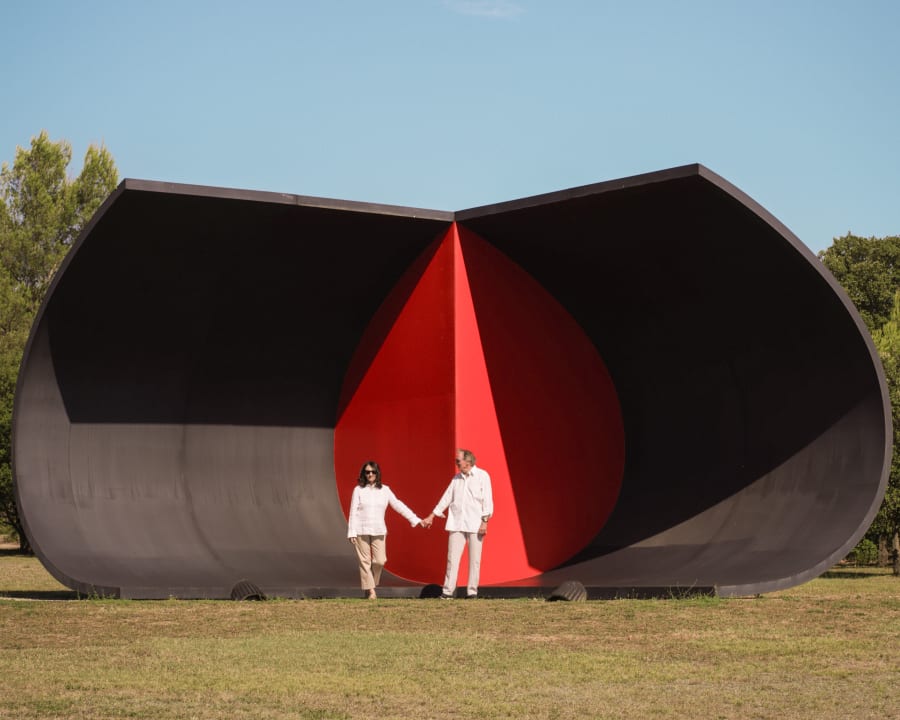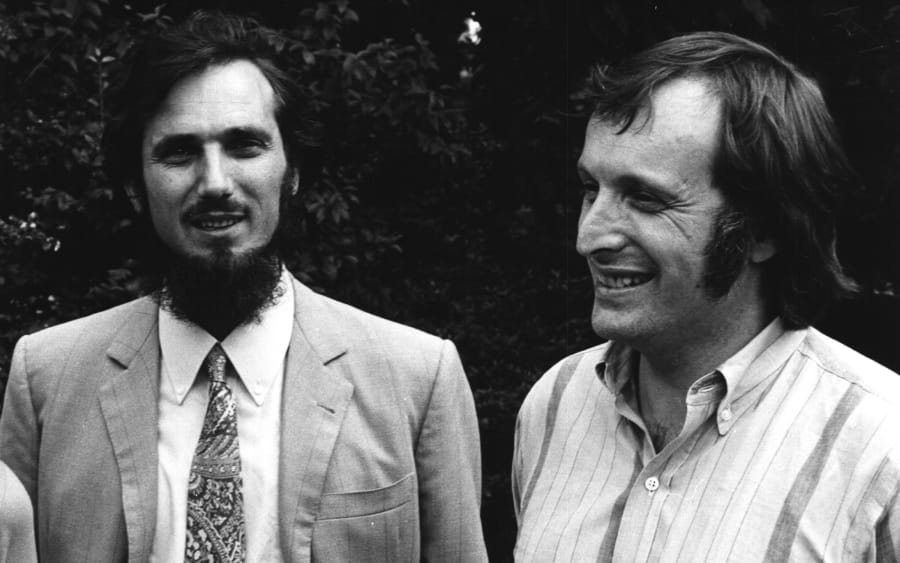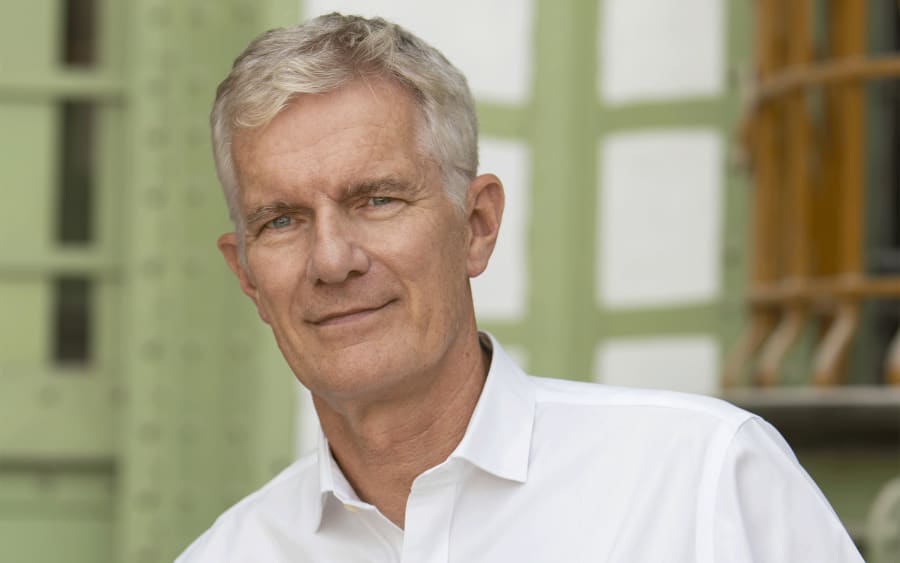Art, once a shy collaborator, has gradually found its way into Bordeaux’s vineyards, weaving an unexpected bond between culture and viticulture. Château Mouton Rothschild led the way in 1924 with an Art Deco label designed by Jean Carlu. The project, launched by Baron Philippe de Rothschild and made permanent in 1945, took a decisive turn after Georges Braque contributed in 1955. ‘The artistic label is obviously a tool of communication, but its creation goes far beyond a commercial gesture,’ says Philippe Sereys de Rothschild, the baron’s grandson and today a co-manager of the estate.
Sereys de Rothschild’s childhood home overflows with artworks, among them a pair of Commedia dell’Arte dancers once owned by Catherine II of Russia – figures that also appear on the label of Grand Cru Classé Clerc Milon. The original work of art now lives in the estate’s museum, inaugurated by André Malraux in 1962. Next door, the Label Museum is devoted to Mouton Rothschild’s illustrated bottles. From Jean Cocteau and Wassily Kandinsky to David Hockney, and Olafur Eliasson, some of the greatest artists have lent their talent to the century-old vineyard. Last year, Gérard Garouste returned to the family’s roots for his inspiration: ‘The baron was a visionary, tireless in his work, who managed to create a new tradition,’ the artist whispered during the unveiling ceremony in the estate’s private salons.
Others vineyards have taken different paths. Château Siran’s artistic labels, launched in 1980, deliberately step away from the world of wine. Although owners Brigitte and Alain Miailhe already collected oenological objects, their vintages’ illustrations commemorate major world events of the year in question. In 1989, A.R. Penck captured the fall of the Berlin Wall; in 1990, Will Alsop marked the opening of the Channel Tunnel. Under the direction of their son Édouard, the 2024 vintage (to be delivered in 2027) will honor the Paris Olympics.
For this Médoc estate, the stakes are high. Located in Labarde, near established names such as Château Margaux, Château Siran is unclassified, lacking the built-in prestige of an appellation. Comte Alphonse de Toulouse-Lautrec Montfa and his wife Jeanne Adèle, then the owners, refused to submit their wine to the classification ordered by Napoleon III in 1855. Their famous great-grandson, Henri de Toulouse-Lautrec, ended his days at Château de Malromé, which today is a museum.
At Château de Ferrand, named a Grand Cru Saint-Émilion in 2012, art is also a way of celebrating its own history. Pauline Bich, heir to Baron Marcel Bich – the founder of the Bic brand – began collecting works made with Bic pens in the early 2000s. ‘In the 1960s, we were the only ones producing ballpoint pens. The medium of certain drawings by René Magritte or Pablo Picasso can easily be traced back to us,’ explains Alix Dufour, Marcel Bich’s granddaughter and head of the cultural project BIC Art au Château de Ferrand. In 2008, Pauline Bich discovered Jan Fabre’s Murano-glass doves at the Louvre and tried, unsuccessfully, to reach Galerie Templon. Years later, a friend tipped her off about eight birds appearing at auction in Sweden. They now inhabit the estate’s salons, open to guests of its luxury rooms, alongside works by Alighiero Boetti and Salvador Dalí.
Another pioneer of wine tourism, Château Smith Haut Lafitte, built its collection on coups de cœur. When Florence and Daniel Cathiard, founders of Go Sport, purchased the estate in the 1990s, a monumental hare by Barry Flanagan quickly found its place on an ‘Art & Vine’ trail. Across the narrow road, the five-star hotel and spa Les Sources de Caudalie has welcomed a refined clientele since 1999. From the tower opposite the château, Florence Cathiard surveys Ernesto Neto’s bench – bought sight unseen at a fair running parallel to FIAC – that now marks the shop’s entrance. Further along, an Anthony Caro sculpture, acquired from Max Hetzler at Art Basel, and Charles Hadcock’s staircase, secured at a private sale at Sotheby’s London in 2009, punctuate the landscape.
In 2016, Cathiard fell for Huang Yong Ping’s mythological serpent, unveiled at ‘Monumenta 2016’ in the Grand Palais. ‘Kamel Mennour explained to me very politely that to install a 185-meter sculpture in the middle of the vines was not a reasonable proposition – meaning way out of budget! But when the piece was dismantled, they found a jaw fragment, and we bought it!’ she exclaims. The artist later added a series of plates to stage an imaginary banquet. Mennour has also placed works with the businessman Bernard Magrez, who began acquiring prestigious vineyards in the 1980s. ‘Back then, Bernard was fascinated by François Pinault’s aura. Buying art for his estates was, in part, a matter of social standing,’ Mennour notes. Among his acquisitions: a Shen Yuan sculpture for Château Labottière, which has now been transformed into a cultural institute.
Other dealers have pursued public collaborations that open up access to a desirable clientele. A longtime friend of Jean-Michel Cazes, the late owner of Château Lynch-Bages, Daniel Lelong inaugurated a series of solo shows at the estate with Pierre Alechinsky in 2001. The following year, Antoni Tàpies took over the historic cellars. In 2023, Fabienne Verdier followed and her Winter Scape has found a permanent home in the raw-concrete contemporary cellars, while a Tàpies work resides in the nearby four-star Hôtel Cordeillan-Bages. Until October 31, 2025, Lynch-Bages is showing paintings by Marc Desgrandchamps.
Often guided by family histories rooted in the land for generations, Bordeaux château owners also support local cultural institutions. In 1957, Marie-Antoinette de Sigalas opened her cellars at Château Sigalas Rabaud to exhibit works by students of Bordeaux’s École des Beaux-Arts. ‘My grandmother promised to acquire a piece to support the project…and in the end she bought everything!’ laughs Laure de Lambert Compeyrot, director of the Bordeaux Wine Route in Graves and Sauternes, glancing at the 15 paintings that still adorn the estate. When the city of Bordeaux installed Bernar Venet sculptures around town in 2007, American philanthropist Robert G. Wilmers offered to host one temporarily at Château Haut-Bailly. Placed on the lawn near the magnolia, Venet’s work never left.
For all its reputation as a bastion of tradition, Bordeaux proves surprisingly nimble, driven by the need to distinguish its vintages in a fiercely competitive global market. Witness the wave of ‘starchitect’ wineries that sprung up in the 2010s. In 2011, Château Cheval Blanc commissioned Christian de Portzamparc to design cellars according to HQE (High Environmental Quality) standards. Across the way, Château La Dominique turned to Jean Nouvel, who created a rippling palette of reds inspired by vinification across the whole building. In Saint-Estèphe, Cos d’Estournel entrusted Jean-Michel Wilmotte with staging the region’s first gravity-flow cellar. This trend continues to enrich this spectacular terroir, just a few hours by train from Paris.
Maïa Morgensztern is an art and culture journalist and radio presenter based in London. She studied art history at the Sorbonne, Paris, and at the Smithsonian Institution, Washington DC.
English translation: Art Basel.
Caption for header image: Vines of Château Mouton Rothschild. Photograph by Pierre Grenet (Astoria Studio).
Published on September 19, 2025.


